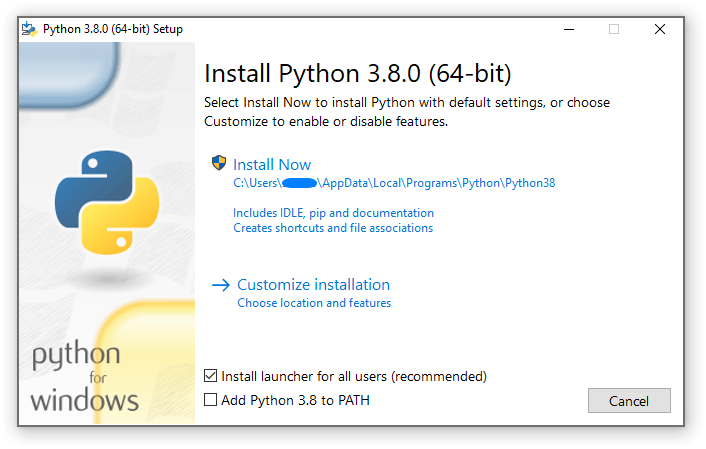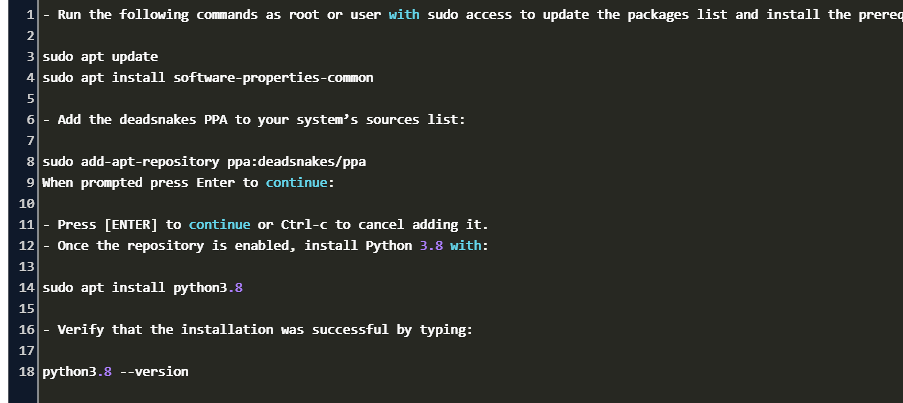

- #Rodeo python 3 install package android#
- #Rodeo python 3 install package software#
- #Rodeo python 3 install package professional#
- #Rodeo python 3 install package windows#
In this Python Tutorial, You will be using the Windows system, and the best Python IDE for Windows that is Jupyter Notebook for which You will be installing Anaconda. Install Anaconda Python and Jupyter Notebook.


You can click on the topics to jump to a specific one. Now, You will see the step-by-step installation and set-up of a working Python 3 distribution on Windows, MacOS, and Linux.įollowing is the list of all topics covered in this Python installation guide.

#Rodeo python 3 install package professional#
Go for the most professional Python Course Online in Toronto for a stellar career now! Even there are so many Youbsit es that allow us to access a Python interpreter online without any installation on your system.
#Rodeo python 3 install package android#
On mobile operating systems like Android and iOS, You can install Python apps which provide an environment for Python programming. This will be discussed later in the relevant section of this tutorial. On MacOS, to install Python 3, first You have to install a package manager called Homebrew. In operating systems like Linux, there will be a package manager which can be run to install Python. #Rodeo python 3 install package software#
You can directly obtain it from the Python Software Foundation Youbsite at. We searched and found Rodeo and couldn't have been more pleased with the IDE. We went through IDEs such as Sublime Text and Spyder, none of which suited our likings. "Ever since we've used RStudio, we've been looking for an IDE like it for Python. We released the very first version of Rodeo just over a year ago and released the 2.0 for Windows, OSX, and Linux about a month ago. Historically speaking, there haven't been a lot of comparable options for Python. And why not? It's a great IDE for data analysis in R. To many users, RStudio is synonymous with R. So lucky for you, Python comes with all string-related batteries included! So the good news for you is that Python is so great for string manipulation, you don't really need a string library! It has a fantastic built-in regular expressions library, re, and a built-in string meta-libarary appropriately called string. Ok so stringr appreciation monologue complete. if people can't install your software, there's no sense in making it). It's well written, performant (at least I think so), and easy to install (don't overlook this last item. briefly nod in appreciation to New Zealand for producing Hadley Wickham. Any time I'm working with strings in R I do 2 things (in order): String manipulation in "base R" is nearly as unintuitive as it is silly. And if you're in the market for some super slick, great looking interactive plots then try out bokeh. If you're after super statistical and technical plots then reach for seaborn. If you like the ggplot-style syntax, then look no further than Yhat's own ggplot. Even so, Python plotting has matured though it's a fractured community. Hands down, R is better in just about every facet. One thing that R still does better than Python is plotting. Basically it took the best parts of reshape/ reshape2 and plyr/ dplyr and Pythonified it! This includes its own implementation of a data frame along with ways to modify and restructure it. pandas took the best parts of data munging in R and turned it into a Python package. This was actually the subject of one of our first posts. It makes switching between LogisticRegression and GradientBoostingMachines a one-liner. scikit-learn provides a common set of ML algorithms all under the same API. This pain is something that Python's scikit-learn solves really well. It's sort of nice because you can find very esoteric, cutting edge implementations of algorithms, but it can be a pain for day-to-day use where you might be switching between algorithms. Meaning instead of having a single (or set) of ML libraries that each implement some common algorithms, each algorithm gets its own package. One thing that is a blessing and a curse in R is that the machine learning algorithms are generally segmented by package. Glm, knn, randomForest, e1071 (yes, this is actually a meaningful package's name) -> scikit-learn So in this post I'm going to go over some critical packages that I use almost every time I work in R, and their counterpart(s) in Python. I'm a big believer that a language is only as helpful as its libraries. One of my favorite parts of machine learning in Python is that it got the benefit of observing the R community and then emulating the best parts of it.








 0 kommentar(er)
0 kommentar(er)
